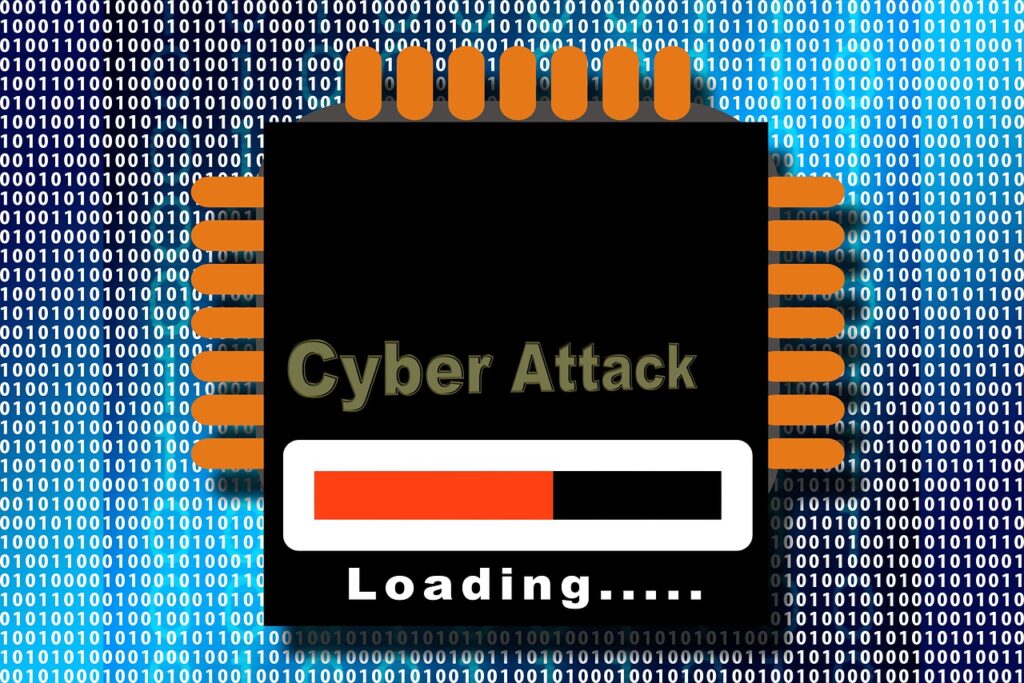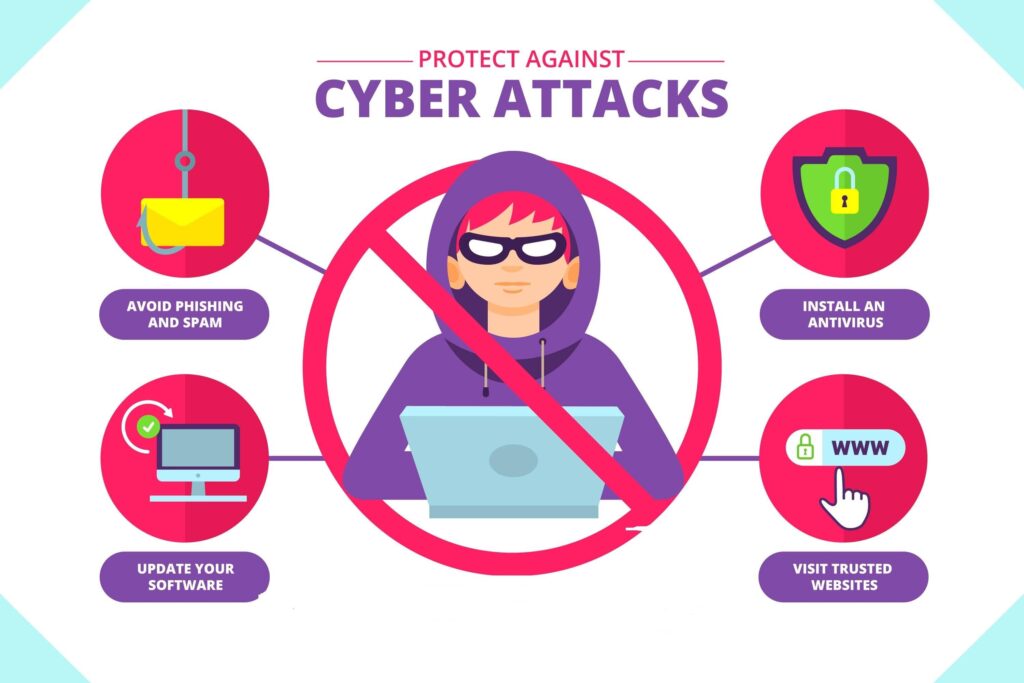Strategies for Handling a Compromised Server:
When a server is compromised, it is natural to have a multitude of questions regarding the appropriate course of action. These common queries revolve around the initial steps to be taken upon arrival at the site, such as disconnecting the server and preserving evidence. In addition, individuals seek guidance on service restoration and preventing the recurrence of similar incidents.
They also wonder about the existence of best practices or methodologies for learning from the situation and enhancing their incident response capabilities. Lastly, individuals often wonder about the starting point for developing an Incident Response Plan and whether it should be integrated with Disaster Recovery or Business Continuity Planning frameworks.
Recently, a person asked me the following questions:
- What should be my initial actions? Upon arrival at the site, should I prioritize server disconnection and preservation of “evidence” or are there other important considerations?
- What steps should I follow to restore services and bring them back online?
- How can I proactively prevent a recurrence of the same incident in the immediate future?
- Are there established best practices or methodologies for learning from incidents and enhancing our incident response capabilities?
- If I intend to create an Incident Response Plan, where should I begin? Should this plan be included as part of our Disaster Recovery or Business Continuity Planning efforts?
My Answer: Don’t Panic
First and foremost, it’s important to understand that there are no quick solutions when your system has been compromised. One of the most effective options is to restore your system from a backup that was created before the intrusion.
- Firstly, it can be challenging to determine the exact time when the intrusion occurred.
- Secondly, restoring the system doesn’t address the underlying vulnerability that allowed the breach nor does it address any potential data theft that may have occurred.
If you have just discovered that your server(s) have been hacked, it is important to take immediate action to mitigate the impact and secure your systems.
Stay calm and avoid making hasty decisions or ignoring the situation altogether. Acknowledge that the disaster has already occurred. This is not the time for denial but for accepting reality and taking steps to manage the consequences effectively.
While some of these steps may pose challenges, ignoring them could exacerbate the situation in the long term. It is crucial to address them promptly to minimize further risks and potential damage. Just like medicine with a bitter taste, you sometimes have to endure it for the cure to work.

Prevent the situation from worsening:
- Disconnect the affected systems from the Internet immediately. No matter the other issues you’re facing, leaving the system connected will only allow the attack to persist. If needed, have someone physically visit the server and unplug network cables to ensure disconnection from the attackers.
- It is crucial to change all passwords for accounts on computers within the same network as the compromised systems. While it may seem excessive, it is better to prioritize safety over regret. The extent of the breach is unknown, so taking this precautionary measure is essential.
- Additionally, thorough checks should be conducted on other systems, particularly those exposed to the Internet or containing sensitive data such as financial information. These systems require extra attention to ensure their security.
- If the compromised system contains personal data, it is important to promptly inform the individual responsible for data protection, if that is not you. It is advisable to advocate for full disclosure, despite the challenges involved. While businesses may prefer to conceal such issues, addressing the problem while considering privacy laws is crucial.
Remember, as difficult as it may be, informing your customers about the problem is essential. TDiscovering the breach themselves, especially after experiencing unauthorized charges using their stolen credit card details, would likely lead to increased frustration for the individuals affected. It is important to remember that the unfortunate event has already occurred. Taking prompt action and being transparent about the breach can help mitigate further damage and restore trust.
The focus now should be on how well you handle the situation.
Understand the problem completely:
- DO NOT reconnect the affected systems to the Internet until you have completed all the necessary steps. Trust me, you don’t want to be the reason I wrote this article. I won’t provide a link to that post for amusement, but the real tragedy lies in people failing to learn from their mistakes.
- Thoroughly examine the compromised systems to understand how the attacks were successful in breaching your security. Make every effort to determine the source of the attacks and identify the specific issues that need to be addressed to enhance the future safety of your system. This proactive approach will help strengthen your security measures and reduce the risk of similar incidents occurring in the future.
- Revisit the compromised systems to assess the extent of the attacks and identify any other potentially compromised systems. It is crucial to be vigilant for any signs that the compromised systems could be used as launching pads for future attacks on your infrastructure. By conducting a thorough investigation, you can mitigate any remaining vulnerabilities and prevent further exploitation.
Is it not sufficient to fix the identified fault or rootkit and restore the system online?
In scenarios like this, the issue arises from losing control over the system. It is no longer your computer, and regaining control becomes uncertain. Once your computer is compromised, regaining control over it becomes uncertain and challenging.
While there is value in identifying and fixing the vulnerability that allowed the intrusion, there is no guarantee of what other actions the intruders might have taken once they gained control. It is not uncommon for hackers who enlist systems into a botnet to patch the exploited vulnerabilities themselves, aiming to protect their newly acquired computers from other hackers. Additionally, they may install their rootkit.
When recovering from a compromised server, refrain from reconnecting the affected systems to the Internet until all necessary steps have been completed. Trust me, you don’t want to be the reason I wrote this article. I won’t provide a link to that post for amusement, but the real tragedy lies in people failing to learn from their mistakes.
Unveiling the Key to Server Security:
Server security best practices: Server security best practices include conducting a comprehensive examination of the compromised systems to understand the methods used to breach your security. It is crucial to determine the source of the attacks and identify specific vulnerabilities that need to be addressed to enhance the future safety of your system.
Handling hacked servers: When dealing with a hacked server, it is important to revisit the compromised systems to assess the full scope of the attacks and identify any potentially compromised systems. It is crucial to remain vigilant and identify any indications that the compromised systems could be used as launching pads for further attacks on your infrastructure.
Expert tips for server compromise: Expert tips for dealing with server compromise include gaining a comprehensive understanding of the entry points, also known as “gateways,” that were exploited in the attacks. This knowledge is crucial for effectively closing these entry points and preventing further unauthorized access.
Strategies to mitigate server breaches: While it is important to identify and address vulnerabilities, rebuilding the entire system is the most effective approach to regain control and eliminate any potential hidden actions by intruders.
Create a recovery plan and follow it to restore your website or system online.
Suggestions for rewriting the paragraph with simplified language, SEO optimization, and bullet points:
- Nobody wants to be offline for longer than necessary. If your website generates revenue, there’s immense pressure to bring it back online quickly.
- However, resist the temptation to go online hastily. Instead, it is crucial to prioritize understanding the root cause of the problem and resolving it before relaunching your website. Failing to do so increases the risk of experiencing another security breach.
- It is important to keep in mind the saying, “Experiencing a hacking incident once may be considered misfortune; however, encountering another immediately after can be seen as carelessness” (with apologies to Oscar Wilde).
- Before proceeding, ensure you have a thorough understanding of the issues that led to the initial intrusion. If not, address those first.
- Never pay blackmail or protection money, as it signifies vulnerability and being an easy target.
- It is crucial to refrain from reconnecting the same server(s) to the internet without performing a complete rebuild. It’s faster to build a new server or perform a clean installation on the existing hardware than meticulously auditing the entire old system. This assumes you have backups and test deployments to build the live site.
- Exercise proper caution when reusing data that was life while hacking. While I won’t say “never do it,” consider the consequences of retaining data whose integrity cannot be guaranteed. Ideally, restore from a pre-intrusion backup. If that’s not possible, handle the data with care, especially if it belongs to customers or site visitors.
- Ensure close monitoring of the system(s) not only immediately after relaunch but also as an ongoing practice. It is important to stay vigilant as intruders may attempt to return. Regular monitoring helps identify new vulnerabilities and gather evidence for law enforcement purposes.
Reducing the risk to prevent cyber-attacks
Security is not a one-time add-on, but a continuous process that should be integrated into every phase of designing, deploying, and maintaining an Internet-facing system.
Despite the potential for tedium and repetition, the advice to prioritize building secure systems from the start remains essential and true. It is crucial to withstand the pressure to swiftly launch a web service and instead focus on establishing a strong foundation of security.
It’s important to acknowledge that risk cannot be eliminated. Instead, direct your attention toward identifying the security risks that are pertinent to your specific situation. Learn how to effectively manage and mitigate these risks to minimize their impact and reduce the likelihood of their occurrence.
What steps can you take to minimize the probability of an attack being successful?

- Considering the Patch Status of Vendor Code: Is the flaw that enabled unauthorized access to your site a recognized bug in the vendor’s code with an available patch? If so, reconsider your approach to patching applications on your Internet-facing servers.
- Is the flaw that led to unauthorized access to your site an undisclosed bug in the vendor’s code without an available patch? Changing suppliers isn’t recommended as they all have their issues. Instead, consider migrating to a more robust system or re-architecting your current system to protect vulnerable components from potential threats.
- If the flaw was a result of a bug in code developed by you or your team, it is crucial to reconsider your code approval process for deploying to your live site. Enhance your testing system and coding standards to identify and address such bugs. Utilize well-documented coding techniques to minimize the likelihood of successful attacks and strengthen your overall security posture.
How can you minimize the impacts of a successful cyber-attack?
If you anticipate a potential flood risk on the lower floor of your home, and moving is not warranted, it may be prudent to relocate valuable family heirlooms to an upstairs area.
- Is it possible to reduce the number of services directly accessible from the Internet? Create a separation between your internal services and those accessible from the Internet.
By reducing the number of services directly exposed to the Internet, you limit the opportunity for attackers to utilize compromised external systems as a launching pad to target your internal systems.
- Are you storing unnecessary information? Evaluate whether certain data can be archived or stored elsewhere instead of online. Minimizing the amount of stored information reduces the risk of data theft and simplifies system maintenance and coding. This approach also lowers the likelihood of introducing bugs into your systems.
- Adhere to the principle of “least access” for your web application. When users only need read access to a database, ensure that the account used by the web application is limited to read-only access, avoiding write access or system-level privileges. This approach minimizes potential risks and restricts unauthorized actions within the system.
Lastly,
I may have missed several important points that others consider significant, but the steps mentioned above should provide a starting point for addressing the situation if you are unfortunate enough to experience a hacking incident.
Most importantly, remain calm and composed. Deep think before taking any action. Once you’ve made a decision, act assertively. We welcome your input and invite you to leave a comment below if you have any additional steps to contribute to the list
Frequently Asked Questions:
Q1: What is a cyber attack?
A cyber-attack refers to an intentional and malicious attempt to compromise computer systems, networks, or devices by exploiting vulnerabilities. These attacks have the objective of disrupting, gaining unauthorized access to, or causing damage to sensitive data, as well as stealing personal information, or inflicting other harmful consequences.
Q2:
What are the typical categories of cyber attacks?
Common types of cyber attacks include:
- Malware: This refers to malicious software explicitly created to harm or gain unauthorized access to a system.
- Phishing: It involves the use of deceptive emails or websites to trick users into disclosing sensitive information, such as passwords or credit card details.
- Denial-of-Service (DoS) and Distributed Denial-of-Service (DDoS) attacks: These attacks aim to overwhelm a network or website by flooding it with an excessive amount of traffic, rendering it unavailable to legitimate users.
- Ransomware: This type of malware encrypts files on a victim’s system and demands a ransom in exchange for decrypting and restoring access to the files.
- Social Engineering: Manipulating individuals to disclose sensitive information or perform actions they normally wouldn’t.
- Man-in-the-Middle (MitM) attacks: These attacks involve intercepting and modifying communications between two parties without their knowledge or consent.
- SQL Injection: Exploiting vulnerabilities in web applications to gain unauthorized access to databases.
Q3: What measures can individuals and organizations take to safeguard themselves against cyber-attacks?
Some preventive measures against cyber attacks include:
- Update operating system and software according to new security patches.
- Utilize strong and unique passwords, enable two-factor authentication, and frequently change passwords.
- Exercise caution when dealing with suspicious emails, refrain from clicking on unfamiliar links, and avoid downloading attachments from untrusted sources.
- Installing reputable antivirus and anti-malware software.
- Educating employees or individuals about cybersecurity best practices and raising awareness about potential threats.
Q4: What actions should be taken if someone becomes a victim of a cyber attack?
If you become a victim of a cyber attack, it is advisable to consider the following steps:
- To prevent further damage or data loss, it is important to disconnect the affected systems from the internet if you become a victim of a cyber attack.
- Report the incident to the appropriate authorities, such as local law enforcement or a national cybersecurity agency.
- Change passwords for compromised accounts and enable additional security measures.
- Restore affected systems from backups, if available.
- Perform a meticulous investigation to assess the full scope of the attack and implement preventive measures to mitigate the risk of future incidents.
Q5: How can organizations improve their cybersecurity posture?
Organizations can enhance their cybersecurity posture by:
Implementing a comprehensive and current cybersecurity policy and framework is essential for enhancing protection against cyber-attacks.- Conducting regular vulnerability assessments and penetration testing.
- Providing ongoing cybersecurity training to employees.
- Implementing access controls, strong authentication mechanisms, and regular user access reviews.
- Develop and establish incident response plans while conducting regular drills to ensure preparedness for potential incidents.
- Seek the assistance of third-party cybersecurity experts to conduct audits and receive recommendations for improving security measures.
- Keeping abreast of the latest cybersecurity threats and staying informed about emerging technologies and practices.
Remember, cybersecurity is an ongoing effort, and staying vigilant and proactive is crucial in protecting against cyber attacks.
Have some time? Visit our website or Twitter page to know more about us



